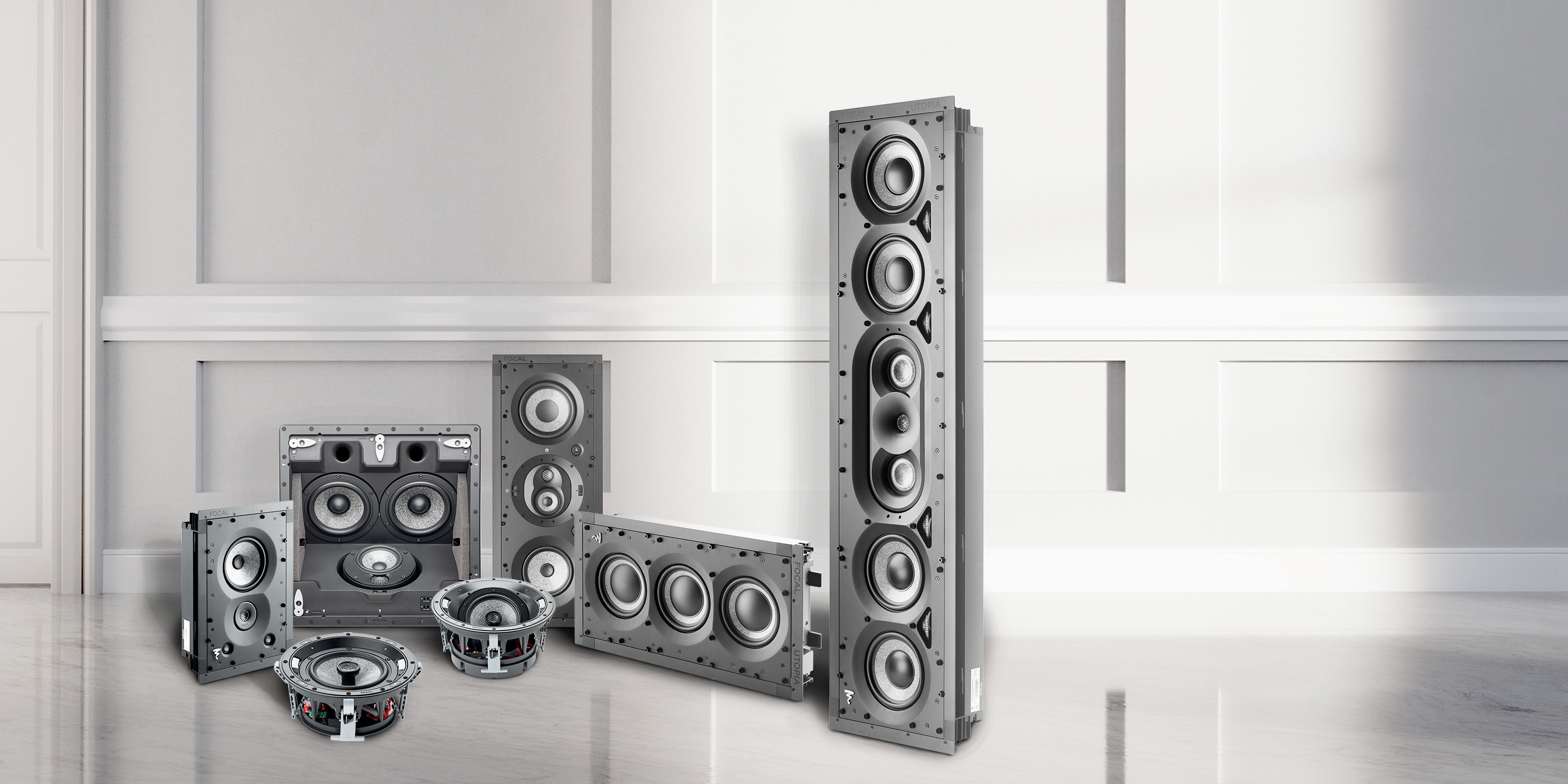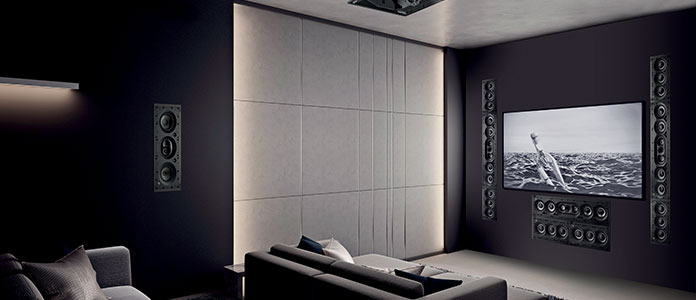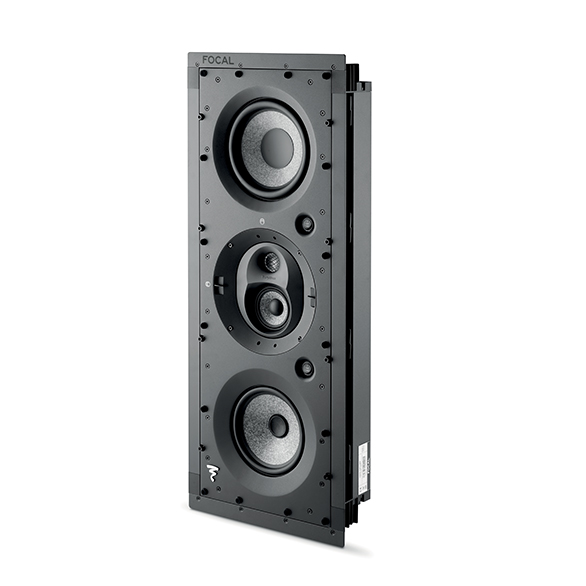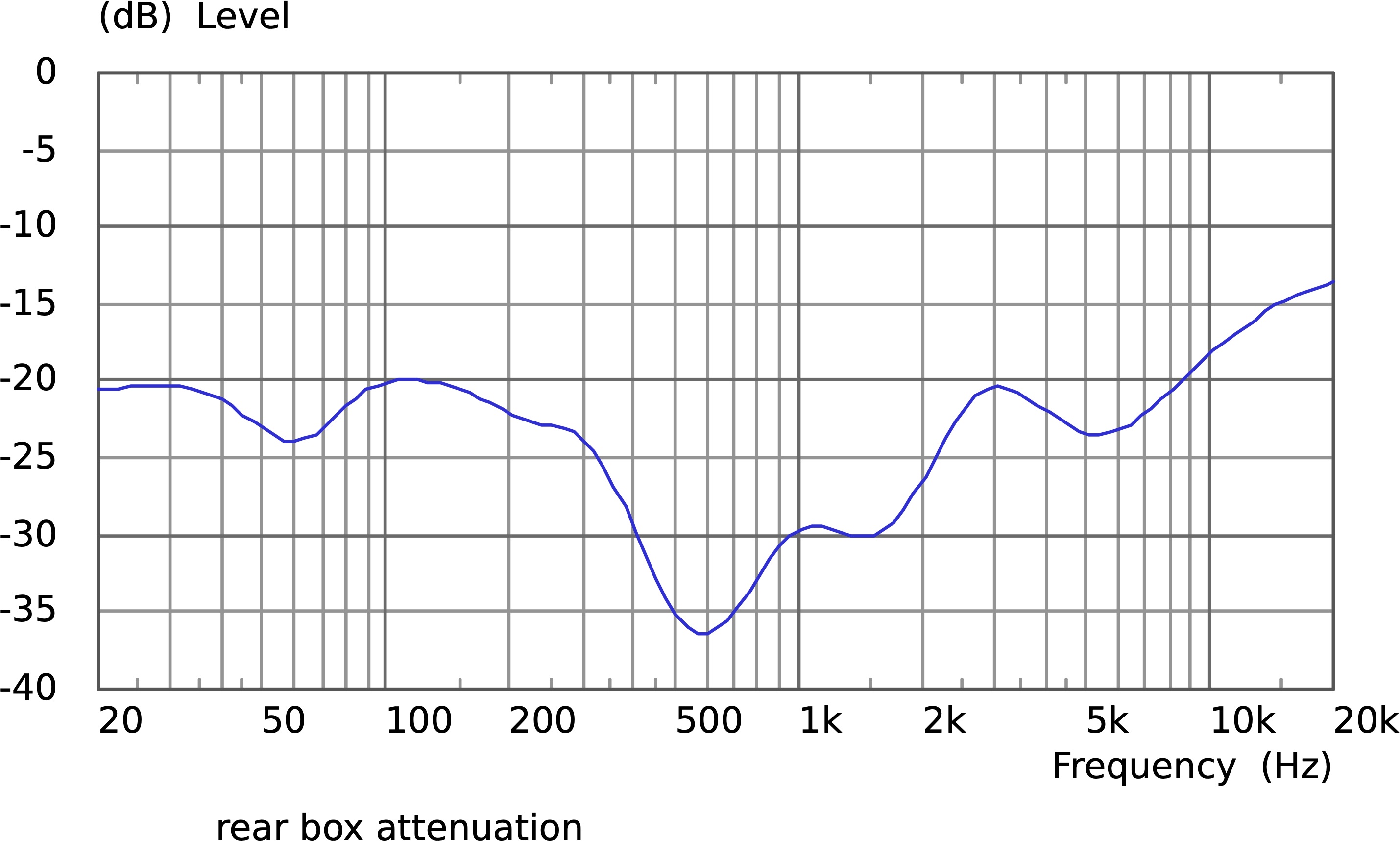

Many manufacturers of architectural speakers claim that the sound quality of their products is equal to that of conventional cabinet speakers. However, certain requirements have to be met for this to be possible.
To understand these prerequisites, a look at traditional hi-fi speakers is necessary. Apart from rather exotic exceptions, tha speaker consists of an internally hollow cabinet in which the individual drivers are built in. When the diaphragm of a driver moves, it displaces the air in front of it, creating sound waves. But a loudspeaker diaphragm always oscillates back as well, and in doing so it displaces the air inside the enclosure.
However, since this air is confined within the enclosure, it does not move nearly as readily as the air outside the enclosure. The enclosure therefore acts like a spring or a damper on the loudspeaker diaphragm via the volume of air it contains. A loudspeaker designer can selectively control exactly what this counteraction looks like, for example, by choosing a larger or smaller volume, by adding a bass reflex channel or by using certain damping material inside the cabinet. Above all, however, he will use loudspeaker drivers that are precisely adapted to the particular enclosure situation.
In a conventional loudspeaker, therefore, the sound results from the finely balanced interaction of the various loudspeaker drivers with the characteristics of the cabinet in which they are installed.

Many in-wall speakers on the market, however, do not have a cabinet in the true sense of the word, but simply consist of a baffle that is open to the rear and in which one or more drivers are mounted. The idea is that these speakers are eventually built into walls and so effectively have some kind of enclosure in the end. The only problem is that this "enclosure" is at best very roughly defined. Some manufacturers don't specify anything about it at all, while others at least specify a minimum and maximum volume in which the speaker is to be installed. Whether and how exactly the installer adheres to this specification? One never knows.
Add to that the fact that in-wall speakers are typically installed in drywall with a load-bearing stud frame. Even if you were to accurately measure the apparent volume behind the speaker, as it's nearly impossible to seal it airtight, the volume would still never be precisely defined. So in the real world, an open-backed in-wall loudspeaker always plays into a randomly ventilated volume of indeterminate size.
Accordingly, the resulting sound is always a kind of gamble. Open in-wall speakers are designed to work somehow okay in as many situations as possible, and thus can never to be truly perfect. So if the advantages of a closed design are so obvious, why don't manufacturers develop closed variants exclusively?
For one thing, there are simply cost restrictions. Since the drivers in an open-backed speaker don't have to fight against the air trapped in an enclosure, their motor systems and many other aspects of the design can be simpler and therefore less expensive to manufacture. In addition, the open-backed design is more flexible to use. If a fixed enclosure is even one millimeter too deep for the intended installation situation, it cannot be used there.

But some manufacturers want to offer their customers particularly good solutions and go to the trouble of designing in-wall speakers with a fixed enclosure for certain high-end series. This then allows designers to develop their InWall speakers as precisely as freestanding hi-fi speakers. The available volume - either for the entire loudspeaker or even for individual drivers - is precisely defined. The drivers can be specifically selected so that they harmonize perfectly with their respective air volume. Likewise, crossovers and all other aspects of the design can be finely tuned.
In summary, this means that closed-back architectural speakers always sound equally good regardless of the installation situation. Of course, this is especially important when the manufacturer has made a name for itself in the classic hi-fi market. For example, when the French sound specialists from Focal add the name Utopia to an in-wall speaker, they do not take this decision lightly. Otherwise, this name is reserved for the absolute top models in Focal's hi-fi range. So it's comprehensible that they want to make sure that this speaker lives up to the big name, in every situation. And that's only possible with a solid closed-back enclosure.

An important side effect of the cosed-back design should not go unmentioned: The fixed enclosure goes a long way toward reducing sound transmitted into the adjacent room. In many situations, this can mean that the wall construction can be thinner, as less sound insulation is needed.

Yes, closed-back architectural speakers are often more expensive than open-backed designs. But the extra cost is not in the enclosure itself, but rather in the more extensive development process and the overall better quality of the drivers and other components used. This means, the extra money spent is a direct investment into better sound quality.